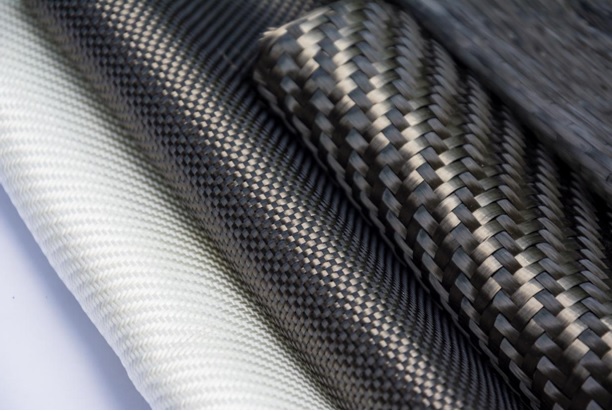I´ve been into carbon fiber ever since I was a kid. I remember watching the Beyond 2000 show (yes, the one that promised we would have flying cars by the year 2000), and being amazed at the things that could be crafted with carbon fiber. It was still a mysterious material for most of us, but there were talks about replacing everything with this dark, super material in the near future.
Well, thirty years have passed, and we still use the same old materials, while flying cars are nowhere to be seen. Nonetheless, we do see a ton of molded carbon fiber parts in machines or objects we never imagined would benefit from this material. Still, the way it is made, and its amazing properties, represent an enigma for many, mainly because making it requires a complex and costly process.
Why Is Carbon Fiber So Expensive?
History dictates that, as technology advances, manufacturing techniques get more efficient, and products get cheaper. However, this has not happened with carbon fiber manufacturers, or at least not as fast as we would like.
The fact is it takes a lot of effort and energy to make composite materials. Carbon fiber does not exist in nature. While its components do, the properties of molded carbon fiber parts come from the combination of completely different elements that have very distinctive traits that we deem desirable, especially for specific applications.

Carbon fiber is extremely rigid and lightweight. A finished carbon fiber part can be a lot stronger and lighter than equivalent metal or plastic parts. This is why it is often used in planes, cars, and other high-end applications. However, many manufacturers have adopted carbon fiber for more day-to-day items, such as golf clubs and wallets.
The manufacturing process of carbon fiber involves combining these incredibly thin, yet remarkably strong, strands with an epoxy resin. The result is a material that is extremely strong and stiff, but also lightweight enough to represent an advantage for high-performance products and parts.
The stiffness and lightness come from two features of carbon fiber, the components, and the “cure”. The components are the strands of carbon fiber filaments thinner than human hair and composed of carbon atoms of about 5-10 micrometers in diameter.
Carbon is an incredibly peculiar material, and one of the hardest elements in nature. It is the sole constituent of diamonds, the hardest natural substance, but also a vital component of graphite, one of the softest materials in existence. The differing properties come with the way carbon atoms arrange themselves. Their properties change depending on the way atoms bond with each other.
Carbon fibers are incredibly thin strands that have amazing tensile strength, and a properly made carbon fiber filament can be stretched up to three times its original length before breaking. They are spun and woven into a cloth-like texture with the all-too-familiar checkered texture carbon fiber enthusiasts have come to love.
However, you cannot make pieces of carbon just by stuffing carbon sheets into a mold. You need to bind the threads together into shape by using a component that acts like a glue. The combination of these two materials is what gives us the famed strength-to-weight ratio of carbon fiber parts.
The “cure” is the process of hardening or curing a resin that covers the carbon fiber strands. Epoxy is a thermoset resin, which means that it crosslinks and hardens when it is exposed to heat and/or pressure. This reaction is what creates the final product, so controlling the cure is essential to ensuring the quality of the carbon fiber part.
For example, when crafting high-strength parts such as aftermarket car parts or aerospatial application products, the epoxy is usually applied through injection molding. Carbon fiber manufacturers create a mold with the specific shape of the finished part, then carefully place the carbon fiber sheets inside and proceed to inject the epoxy into the sheets. Then, the mold is treated with heat, vacuum, or pressure, depending on the epoxy used or the results you are after. We will cover the curing process in detail in a future entry.
Other carbon fiber manufacturing processes only require wrapping a mold or part with sheets and “painting” it with epoxy. It is a long process that requires several iterations and the application of correctives along the way.
But the purpose of curing is to provide a stiff and cross-linked matrix with the finely woven carbon fiber threads. This is what ultimately grants this super material its strength and rigidity. The final product is light but incredibly strong! This makes it the perfect material for a variety of applications; from aircraft parts to bike frames.

Why Isn’t Everything Made Out Of Carbon?
Many carbon fiber manufacturers today dominate the art of creating carbon fiber products. This composite is incredibly versatile and can be molded and weaved into endless forms. So, why don’t we have carbon fiber mugs, chairs, keyboards, and even houses?
Explaining the process of making carbon fiber in a single article, without allowing you to take a peek inside the mad hatter’s shop, would make it seem like an easy material to manufacture.
The reality is that it is an extremely complex process that is not easily scalable. The cost of precursors, the elements used as raw materials, is relatively high. The process of creating the long strings of carbon atoms and achieving the right tensile strength, and then weaving them into resistant and flexible structures is extremely resource-intensive. Then carbon fiber manufacturers need to mold, curate, cut, and machine their carbon fiber into finished parts, and this takes a lot of skill and experience to get every part of the process right.
The complexity of the process means that there are many ways for things to go wrong, and a lot of trial and error is needed to produce high-quality carbon fiber parts. This makes it important to only buy carbon fiber products from composite providers who can guarantee top performance materials for your projects while keeping costs competitive.
Protech Composites helps carbon fiber manufacturers of all sizes and industries discover new ways carbon fiber can elevate their product´s performance and style.

